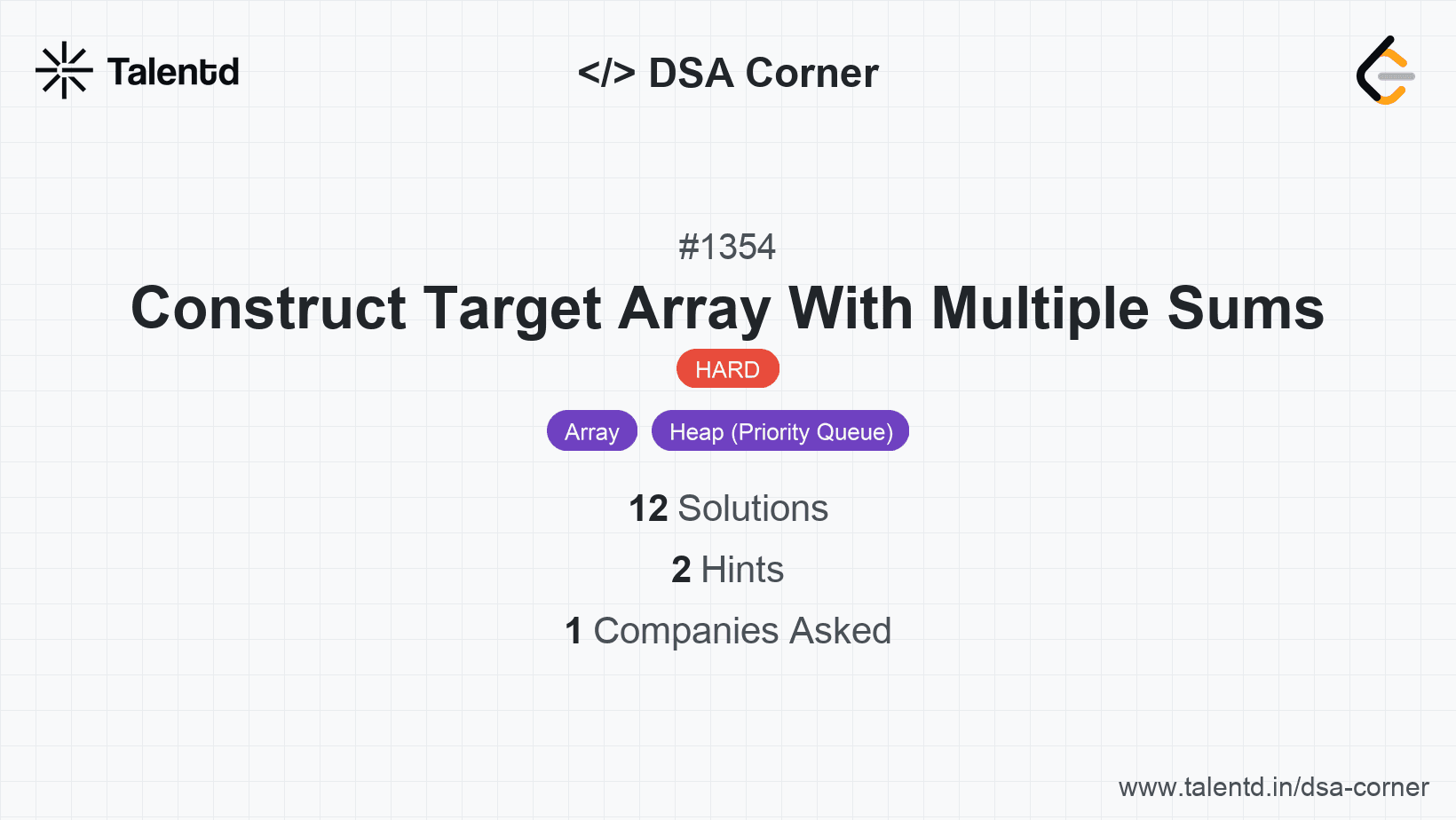
Sponsored
Sponsored
This approach uses a max-heap (priority queue) to efficiently track and operate on the largest element. The primary idea is to reverse the operation: starting from the target array, every large element in the target can be seen as the result of adding all smaller elements in the array to one of the array's elements during the last operation. By repeatedly transforming the largest element in this manner, we can verify if it is possible to reach the initial array of ones.
The time complexity is O(n log n * log maxValue) due to sorting and heap operations, where n is the number of elements and maxValue is the maximum integer in the target. The space complexity is O(1) since we are sorting and using in-place operations optimistically.
1function isPossible(target) {
2 let total = target.reduce((a, b) => a + b, 0);
3 target = target.map
This JavaScript solution uses sorting to simulate the effects of a max-heap, handling array operations similarly by transforming and replacing the largest element in a reversed process to test feasibility of reaching base conditions.
This approach utilizes a sort and modulo method to reverse-track the process involved in constructing the target array from an array containing ones. It revolves around repeatedly reducing the maximum value to the remainder after division with the sum of other elements.
Steps include:
Time complexity is O(n log n * log maxValue); space complexity is O(1) when using in-place operations for sorting and arithmetic.
1#include <stdio.h>
2#include <stdlib.h>
3#include <stdbool.h>
4
5int cmp(const void *a, const void *b) {
6 return (*(int *)b - *(int *)a);
7}
8
9bool isPossible(int* target, int targetSize) {
10 long sum = 0;
11 for(int i = 0; i < targetSize; i++) sum += target[i];
12 qsort(target, targetSize, sizeof(int), cmp);
13
14 while(target[0] != 1) {
15 long max = target[0], rest = sum - max;
16 if (rest == 0 || max <= rest) return false;
17 int new_value = (int) (max % rest == 0 ? rest : max % rest);
18
19 if(new_value == 0) return false;
20 sum = sum - max + new_value;
21 target[0] = new_value;
22 qsort(target, targetSize, sizeof(int), cmp);
23 }
24 return true;
25}
26
27int main() {
28 int target[] = {8, 5};
29 int targetSize = sizeof(target) / sizeof(target[0]);
30 printf("%s\n", isPossible(target, targetSize) ? "true" : "false");
31 return 0;
32}In this solution, once again a sorting technique is employed to control the biggest element in the target array for each operation. This allows management of the leading maximal element's transformation. By reducing the main element while checking the constraints, the algorithm either resolves the target to all ones or determines impossibility.